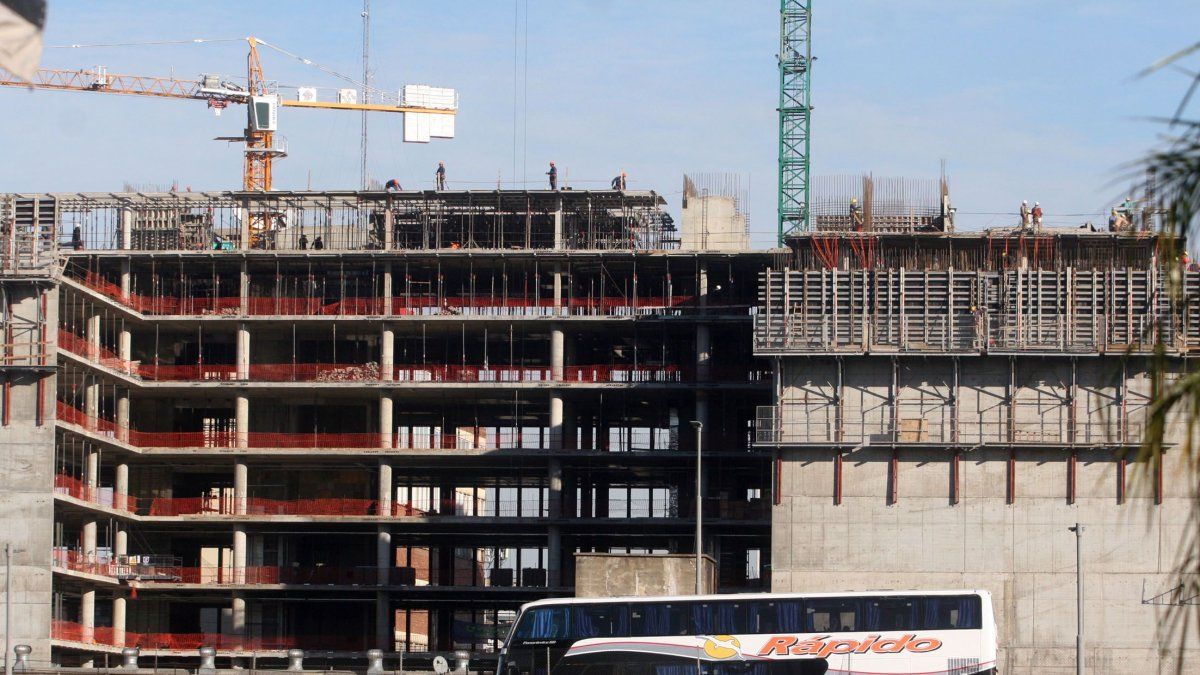After many months of falling activity levels, it seems that March was the bottom, and from there a small and slow recovery began. And although July offered encouraging data, This rebound in activity would not have been sustained in August, as a slowdown occurred. At least that is the conclusion that specialists have drawn from the first key indicators that appeared on the economy in the eighth month of the year.
“The first two primary activity figures for August do not allow us to maintain the optimism that those for July gave for the monthly level of activity”explained the consulting firm Outlier.
One of the indicators mentioned are cement offices. After a 26% monthly increase in July, growth paused again in August. This time, the volume of shipments reported by the Portland Cement Manufacturers Association (AFCP) fell 2.6% monthly and 26.3% year-on-year, in a month that historically appears to be seasonally favorable.
“Cement shipments to the domestic market reported by the AFCP with seasonal adjustment fell in August by more than 7% monthly compared to July and returned a good part of the increase that had been registered during that monthalthough it is clear that they maintain the positive slope since the last local minimum. It is also true that they remain at levels that we have not seen since the pandemic,” Outlier stressed.
The second data, on automotive production, released by the Association of Automotive Manufacturers (ADEFA), remained in positive territory in August, but marked a slowdown compared to July. This indicator grew by 1.2% monthly, compared to 22% in July, and is still far from August levels.
image.png
Source: 1816
Unlike Outlierfrom the consulting firm 1816assured that high-frequency indicators of consumer prices indicate that in August inflation stabilized around July levels, but In terms of activity, it appears to be a “considerably more positive month than July.”
In this regard, the economist Gabriel Caamano of Ledesma Consultantexplained why the indicators are so positive for 1816: “Here they forgot about cement shipments and car production, which are the real primary ones. Collection, VAT, etc., are not activity indicators on a monthly basis. Patenting always has a lot to do with sales from the previous month, and always seasonal adjustment,” said X.
Finally, in August the Build Index (IC)which measures the evolution of the volumes sold to the private sector of construction products, recorded a a seasonally adjusted 4.3% monthly drop, while remaining 20.1% below the August 2023 level.
“There was a correction in shipments in August, within a trend towards recovery that has been observed since April”explained Construya. In this way, On average, shipments from the Construya group in January-August 2024 were 29.3% lower than those made during the eight months of 2023.
Economic activity: the city’s reading
“We believe that The worst in terms of the pace of economic contraction may be behind us. We believe that a possible reason is that The expansion of private credit after the successive reductions in reference rates by the BCRA could have contributed in this regard.given the expansive nature in terms of money supply that would contain the economic contraction in the context of fiscal adjustment,” explained Grupo SBS.
For this report, the flip side of this is the difficulty in breaking through the inflation levels of the last three months. “We repeat what we have been highlighting for some months in terms of registered private employment: as of June, the direct decrease since November is in the order of 2.3%, the largest direct contraction in 7 months since the crisis of 2008. A further deterioration in the labour market would lead to a greater weakness in consumption.“, they emphasized.
And they added: “Regarding real income, we see the same as for general activity: the worst in terms of the rate of decline would have been left behind, although to think of a sustained rise in real wages improvements in productivity must be seen, something that can only occur through medium and long-term reforms. In that sense, We take this opportunity to re-emphasize that a recovery that is not a mere rebound and points to sustained growth can only occur in a normalized macroeconomic environment.which is why we continue to see the removal of exchange controls currently in force as crucial.”
Source: Ambito




